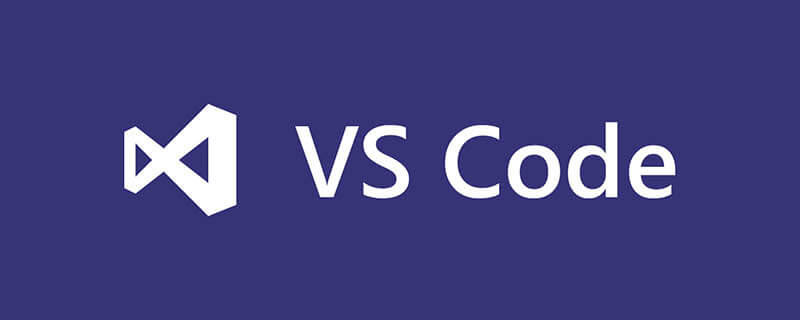C语言结构体,可谓是C强大功能之一,也是C++语言之所以能衍生的有利条件,事实上,当结构体中成员中有函数指针了后,那么,结构体也即C++中的类了。
C语言中,结构体的声明、定义是用到关键字struct,就像联合体用到关键字union、枚举类型用到enum关键字一样,事实上,联合体、枚举类型的用法几乎是参照结构体来的。结构体的声明格式如下:
struct tag-name{
{
member 1;
…
member N;
};
因此,定义结构体变量的语句为:struct tag-name varible-name,如struct point pt;其中,point 为tag-name,pt是结构体struct point变量。当然,也可以一次性声明结构体类型和变量,即如下:struct tag-name {…} x,y,z;就类似于int x,y,z;语句一样。也可以在定义结构体变量时即赋初值,即变量初始化,struct point pt={320,200};
当然,也就可以有结构体指针、结构体数组了。访问结构体变量中的member的方法有:如果是由结构体变量名来访问,则是structure-variable-name.member;如果是由结构体变量指针来访问,则是structure-variable-pointer->member;
好了,上面的不是重点,也不难掌握,只是细节问题。结构体具有重要的应用,如下的:
如自引用的结构体,常用来作为二叉树等重要数据结构的实现:假设我们要实现一个普遍的问题的解决算法——统计某些输入的各单词出现的频数。由于输入的单词数是未知,内容未知,长度未知,我们不能对输入进行排序并采用二分查找。……那么,一种解决办法是:将已知的单词排序——通过将每个到达的单词排序到适当位置。当然,实现此功能不能通过线性排序,因为那样有可能很长,相应地,我们将使用二叉树来实现。该二叉树每一个单词为一个二叉树结点,每个结点包括:
- a pointer to the text of the word
- a count of the number of occurences
- a pointer to the left child node
- a pointer to the right child node
其写在程序中,即:
struct tnode{/*the tree node:*/
char *word;/*points to the next*/
int count;/*number of occurences*/
struct tnode *left;/*left child*/
struct tnode *right;/*right child*/
}
完成上述功能的完整程序如下:
#include<stdio.h>
#include<ctype.h>
#include<string.h>
#include"tNode.h"
#define MAXWORD 100
struct tnode *addtree(struct tnode *,char *);
void treeprint(struct tnode *);
int getword(char *,int);
struct tnode *talloc(void);
char *strdup2(char *);
/*word frequency count*/
main()
{
struct tnode *root;
char word[MAXWORD];
root=NULL;
while(getword(word,MAXWORD)!=EOF)
if(isalpha(word[0]))
root=addtree(root,word);
treeprint(root);
return 0;
}
#define BUFSIZE 100
char buf[BUFSIZE];/*buffer for ungetch*/
int bufp=0;/*next free position in buf*/
int getch(void)/*get a (possibly pushed back) character*/
{
return (bufp>0)? buf[--bufp]:getchar();
}
void ungetch(int c)/*push back character on input*/
{
if(bufp>=BUFSIZE)
printf("ungetch:too many characters\n");
else
buf[bufp++]=c;
}
/*getword:get next word or character from input*/
int getword(char *word,int lim)
{
int c,getch(void);
void ungetch(int);
char *w=word;
while(isspace(c=getch() ));
if(c!=EOF)
*w++=c;
if(!isalpha(c)){
*w='\0';
return c;
}
for(;--lim>0;w++)
if(!isalnum(*w=getch())){
ungetch(*w);
break;
}
*w='\0';
return word[0];
}
/*addtree:add a node with w,at or below p*/
struct tnode *addtree(struct tnode *p,char *w)
{
int cond;
if(p==NULL){/*a new word has arrived*/
p=talloc();/*make a new node*/
p->word=strdup(w);
p->count=1;
p->left=p->right=NULL;
}else if((cond=strcmp(w,p->word))==0)
p->count++;/*repeated word*/
else if(cond<0)/*less than into left subtree*/
p->left=addtree(p->left,w);
else /*greater than into right subtree*/
p->right=addtree(p->right,w);
return p;
}
/*treeprint:in-order print of tree p*/
void treeprint(struct tnode *p)
{
if(p!=NULL){
treeprint(p->left);
printf("%4d %s\n",p->count,p->word);
treeprint(p->right);
}
}
#include<stdlib.h>
/*talloc:make a tnode*/
struct tnode *talloc(void)
{
return (struct tnode *)malloc(sizeof(struct tnode));
}
char *strdup2(char *s)/*make a duplicate of s*/
{
char *p;
p=(char *)malloc(strlen(s)+1);/*+1 for '\0'*/
if(p!=NULL)
strcpy(p,s);
return p;
}
其中,其它的关于union、enum这里就不多说了,再说一个关于结构体的非常重要的应用——位操作:
当然,我们知道,对于位操作,我们可通过#define tables(即用宏和C中的位操作来实现)
如:
#define KEYWORD 01 /*0001*/ #define EXTERNAL 02 /*0010*/ #define STATIC 04 /*0100*/
或
enum{KEYWORD =01,EXTERNAL =02,STATIC =04};
那么,flags|=EXTERNAL|STATIC;将打开flags的EXTERNAL和STATIC位,而
flags&=~(EXTERNAL|STATIC);将关闭flags的EXTERNAL和STATIC位.
然而,上述定义的位模式可以用结构体如下写:
struct{
unsigned int is_keyword:1;
unsigned int is_extern:1;
unsigned int is_static:1;
}flags;/*This defines a variable called flags that contains three 1-bit fields*/
那么,上述打开相应位的操作为:
flags.is_extern=flags.is_static=1;
上述关闭相应位的操作为:
flags.is_extern=flags.is_static=0;
 (超详细)VScode中配置C语言环境的方法Dec 05, 2022 pm 07:05 PM
(超详细)VScode中配置C语言环境的方法Dec 05, 2022 pm 07:05 PMVScode中怎么配置C语言环境?下面本篇文章给大家介绍一下VScode配置C语言环境的方法(超详细),希望对大家有所帮助!
 c语言中node是什么意思Jul 06, 2022 pm 03:51 PM
c语言中node是什么意思Jul 06, 2022 pm 03:51 PM在C语言中,node是用于定义链表结点的名称,通常在数据结构中用作结点的类型名,语法为“struct Node{...};”;结构和类在定义出名称以后,直接用该名称就可以定义对象,C语言中还存在“Node * a”和“Node* &a”。
 c语言怎么将数字转换成字符串Jan 04, 2023 pm 03:20 PM
c语言怎么将数字转换成字符串Jan 04, 2023 pm 03:20 PMc语言将数字转换成字符串的方法:1、ascii码操作,在原数字的基础上加“0x30”,语法“数字+0x30”,会存储数字对应的字符ascii码;2、使用itoa(),可以把整型数转换成字符串,语法“itoa(number1,string,数字);”;3、使用sprintf(),可以能够根据指定的需求,格式化内容,存储至指针指向的字符串。
 c语言开根号运算符是什么Mar 06, 2023 pm 02:39 PM
c语言开根号运算符是什么Mar 06, 2023 pm 02:39 PM在c语言中,没有开根号运算符,开根号使用的是内置函数“sqrt()”,使用语法“sqrt(数值x)”;例如“sqrt(4)”,就是对4进行平方根运算,结果为2。sqrt()是c语言内置的开根号运算函数,其运算结果是函数变量的算术平方根;该函数既不能运算负数值,也不能输出虚数结果。
 c语言数组如何初始化Jan 04, 2023 pm 03:36 PM
c语言数组如何初始化Jan 04, 2023 pm 03:36 PMC语言数组初始化的三种方式:1、在定义时直接赋值,语法“数据类型 arrayName[index] = {值};”;2、利用for循环初始化,语法“for (int i=0;i<3;i++) {arr[i] = i;}”;3、使用memset()函数初始化,语法“memset(arr, 0, sizeof(int) * 3)”。
 c语言合法标识符的要求是什么Aug 27, 2020 pm 01:47 PM
c语言合法标识符的要求是什么Aug 27, 2020 pm 01:47 PMc语言合法标识符的要求是:1、标识符只能由字母(A~Z, a~z)、数字(0~9)和下划线(_)组成;2、第一个字符必须是字母或下划线,不能是数字;3、标识符中的大小写字母是有区别的,代表不同含义;4、标识符不能是关键字。
 c语言中源文件编译后生成什么文件Nov 23, 2022 pm 07:44 PM
c语言中源文件编译后生成什么文件Nov 23, 2022 pm 07:44 PMc语言编译后生成“.OBJ”的二进制文件(目标文件)。在C语言中,源程序(.c文件)经过编译程序编译之后,会生成一个后缀为“.OBJ”的二进制文件(称为目标文件);最后还要由称为“连接程序”(Link)的软件,把此“.OBJ”文件与c语言提供的各种库函数连接在一起,生成一个后缀“.EXE”的可执行文件。
 c语言中*p和p的区别是什么Nov 29, 2022 pm 06:03 PM
c语言中*p和p的区别是什么Nov 29, 2022 pm 06:03 PM区别:1、表示的含义不同,“*p”表示此指针指向的内存地址中存放的内容,“p”表示一个指针变量的名字,指此指针变量所指向的内存地址。2、输出的格式不同,“*p”输出的一般是一个和指针类型一致的变量或者常量,“p”输出的是一个16进制数, 输出一个指针的地址。3、功能不同,“*p”是让程序去那个地址取出数据,“p”用于存放的是地址。


Hot AI Tools

Undresser.AI Undress
AI-powered app for creating realistic nude photos

AI Clothes Remover
Online AI tool for removing clothes from photos.

Undress AI Tool
Undress images for free

Clothoff.io
AI clothes remover

AI Hentai Generator
Generate AI Hentai for free.

Hot Article

Hot Tools

MinGW - Minimalist GNU for Windows
This project is in the process of being migrated to osdn.net/projects/mingw, you can continue to follow us there. MinGW: A native Windows port of the GNU Compiler Collection (GCC), freely distributable import libraries and header files for building native Windows applications; includes extensions to the MSVC runtime to support C99 functionality. All MinGW software can run on 64-bit Windows platforms.

DVWA
Damn Vulnerable Web App (DVWA) is a PHP/MySQL web application that is very vulnerable. Its main goals are to be an aid for security professionals to test their skills and tools in a legal environment, to help web developers better understand the process of securing web applications, and to help teachers/students teach/learn in a classroom environment Web application security. The goal of DVWA is to practice some of the most common web vulnerabilities through a simple and straightforward interface, with varying degrees of difficulty. Please note that this software

SecLists
SecLists is the ultimate security tester's companion. It is a collection of various types of lists that are frequently used during security assessments, all in one place. SecLists helps make security testing more efficient and productive by conveniently providing all the lists a security tester might need. List types include usernames, passwords, URLs, fuzzing payloads, sensitive data patterns, web shells, and more. The tester can simply pull this repository onto a new test machine and he will have access to every type of list he needs.

WebStorm Mac version
Useful JavaScript development tools

SublimeText3 Linux new version
SublimeText3 Linux latest version






